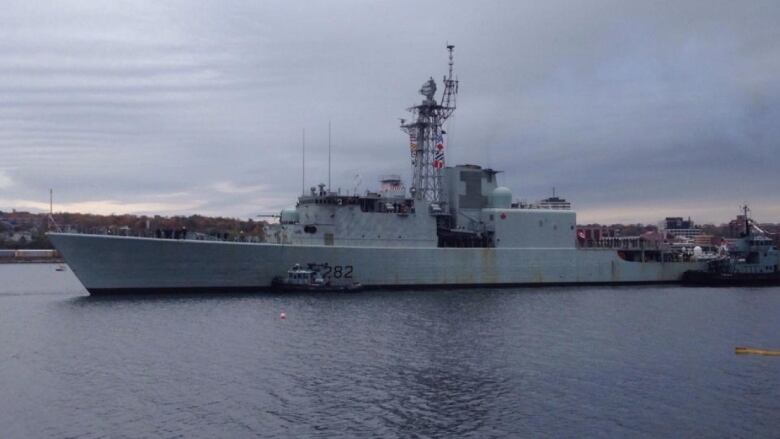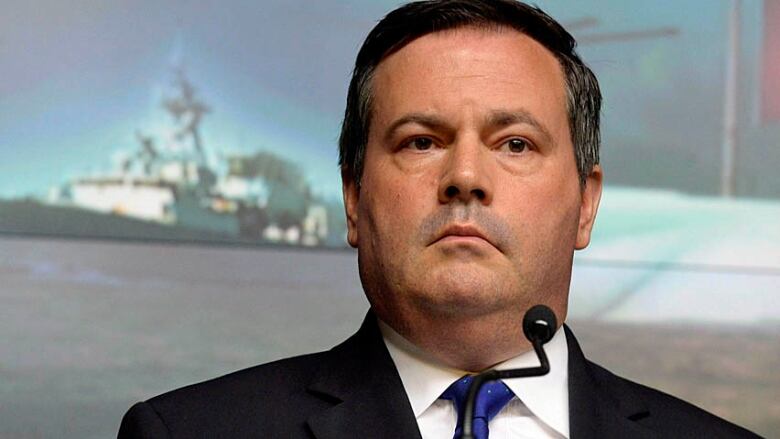Canada's patched-up military: Too few dollars, too many missions
If there is an election debate needed, it's on Canada's military role and what we can afford

National defence is a dead zone in our elections, rarely debated in depth in a country where the military and its multiple problems are mostly out of sight, out of mind.
Sure, the bizarre complexities of the F-35 stealth fighter inevitably surface, as they did when Justin Trudeau vowed to scrap it entirely from the competition to replace the aging CF-18s.
But controversy briefly focused on one weapon system is hardly an adequate debate into the chronic ills of a long-underfunded military.
- JasonKenneysays Conservative government will boost special forces
- Canada's more aggressive role in the world not gone unnoticed
- Comparing the leaders' positions on military involvement
This national conversation is missing because politicians know defence is rarely a big vote getter, and voters seem content to let Ottawa spend as little on defence as it can get away with. And it gets away with a lot.
Somehow we scrape by with a dilapidated navy, now forced to rent foreign supply ships on a day-rate just to keep our much shrunken fleet occasionally ocean worthy.
Then there is an air force still bewildered over when it will get to replace the CF-18s we bought back in the 1980s; and an army impatient to see delivery of the new trucks that have been promised for a decade.
Those steadily rising military budgets and bold new weapons promised by the Harper government back in 2008 under the Canada First Defence Strategy have been derailed by budget cuts, spending freezes and procurement foul-ups.
Follow the debate with CBCnews.ca
Conservative Leader Stephen Harper, NDP Leader TomMulcairandLiberal Leader JustinTrudeauface off on foreign policy tonight in the fourth of five election leaders debates: This one hosted by theMunkDebates at Toronto's Roy Thomson Hall, starting at 7 p.m. ET.
CBC News will host a specialliveblogfeaturing debate highlights and analysis, at cbcnews.ca/canadavotes.
TheMunkDebates will offer alivestreamfor the bilingual event, with translation. Tonight's debatewill also belivestreamedonFacebookand carried onCPAC(the Cable Public Affairs Channel) and CHCH.
While the Conservative government claims its defence spending over the years has risen massively, independent studies show the Tories actually underspent their own approved military budgets by close to $10 billion. They also chopped nearly $5 billion from defence since 2012, in large part to help Stephen Harper reach his much proclaimed budget surplus.
"The spending now on the military, when you adjust for the inflation is back where it was at roughly 2007 levels," says David Perry, senior defence analyst with the Conference of Defence Associations.
The other Trudeau
We tend to think that the $18 to $20 billion we spend a year on defence amounts to an awful lot over a decade or so.
But it is actually far short of what's needed to sustain our forces in the work we expect them to do.

We're going to need to add on much more between $33 billion and $42 billion across the coming decade just to adequately modernize and maintain our military, warns Parliamentary Budget Officer Jean-Denis Frechette.
And even that wouldn't satisfy our allies. Leaders of the NATO alliance, especially the U.S. and U.K., nag that we should be spending twice what we're now doing, up from one per cent of GDP to the two per cent that NATO members have set as the common goal.
The last time Canada hit that two per cent mark was (surprise) under Pierre Trudeau over 40 years ago, and we're not about to get even remotely close in the foreseeable future.
So we remain slumped near the bottom of NATO, 22 out of 28 in the percentage of GDP that we spend on a common defence.
Trading dollars for duties
The curious thing in all this is that the lower we sink in military spending, and the more tattered our equipment, the tougher our government promotes Canada's military "brand" and its role abroad
That surely is no accident. What Harper has done is shrug off the NATO nagging by trading dollars for duties.
This is done by setting up our armed forces as a reliable "go to" force in the Western alliance. A minor contributor, but a hyperactive one.
So, in just the past five years, Canadians have fought in Afghanistan, chased pirates in the Red Sea, bombed Libya, conducted air strikes against ISIS in Iraq and Syria, trained combat troops near front-line position in Kurdistan, Iraq, helped upgrade Ukraine's embattled infantry and flown fighter patrols over Baltic nations as part of NATO's show of force.
- VOTE COMPASS: Check where you fit on the political spectrum
- CANADA VOTES: More federal election coverage
- POLL TRACKER: See how the parties are doing
The Conservatives have not exactly turned our military into a mercenary force, but they have insisted that multi-million-dollar values be attached to this muscular service abroad and included in NATO accounts.
It's a powerful case, strongly made, at a time when many European NATO members are notoriously reluctant to volunteer for risky foreign missions. Harper's Canada by contrast seems to strain at the leash.
A coastal defence force
"We don't measure these things strictly in terms of dollars, we measure them in terms of capabilities," Harper has said when asked about Canada's share of NATO spending.
The problem, though, is that while a (often limited) show of capabilities overseas can give us some make-up points with allies, it does nothing to address the serious weaknesses that flow from dilapidated equipment and constant budget shortfalls.

Two years ago, a very rare red-flag memo from then chief of the defence staff, Gen. Tom Lawson, warned that continued budget cuts threatened the availability of key fleets of aircraft, ships and army vessels while "this in turn has an overall impact upon training and readiness."
The navy, tasked with defending seven million squarekilometres of Canadian waters has essentially been reduced to little more than a modest coastal defence force.
It lacks modern destroyers as command ships, and the dozen frigates left now lack dedicated large supply ships, which are essential for deep ocean operations.
- Brian Stewart: How not to rebuild Canada's navy
- Canada's vast shipbuilding plan still at the starting line
Eventually our own "joint support ships" will be built as part of a planned $28 billion modernization. But this plan, too, has been dogged by constant procurement delays.
As for future promises, the Conservatives are vowing larger reserves and bigger budgets, but only starting two years from now.
Meanwhile the Liberals promise cheaper fighter jets and to make the navy "a priority," and the NDP vaguely vows to repair a military that both past Liberal and Conservative governments have allowed "to rust out."
Overall, it's pretty thin campaign gruel and perhaps what we've grown to expect.
Still, whoever gains power next month has a rude reality looming as the now staggering cost of delayed military modernization keeps escalating with inflation, and will be the bane of balanced budget hopes for many years to come.












_(720p).jpg)


 OFFICIAL HD MUSIC VIDEO.jpg)
.jpg)



























































































